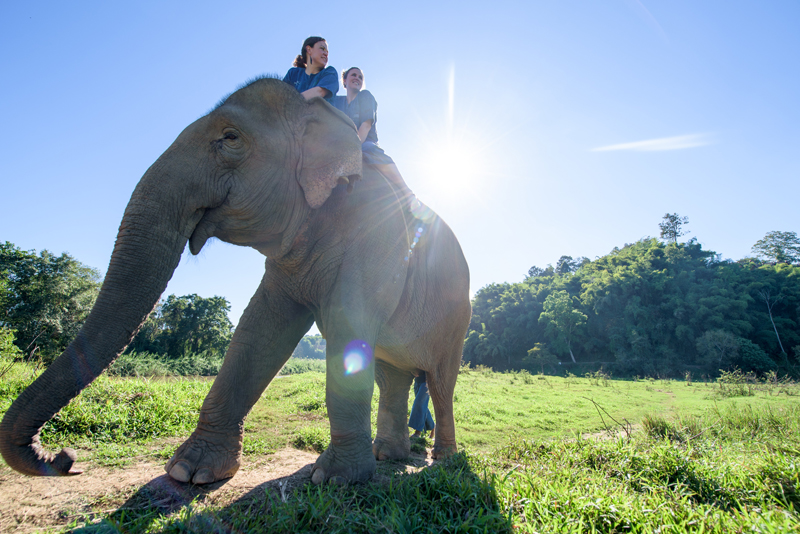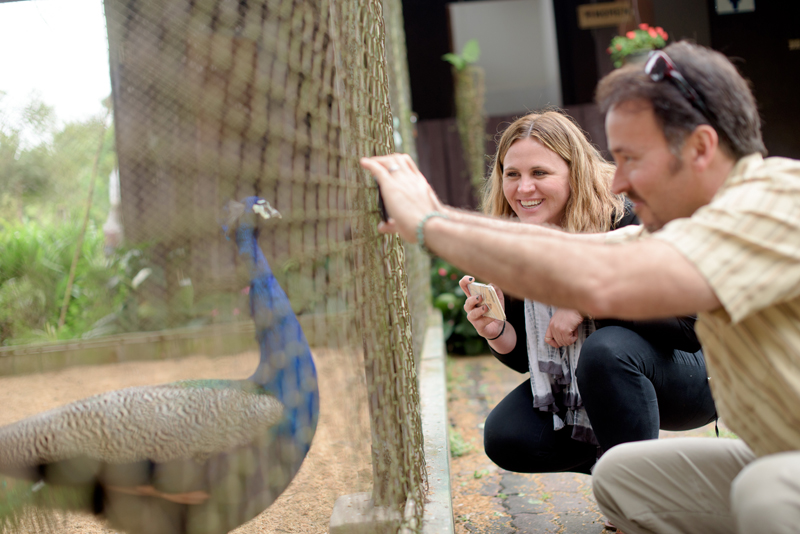We think about ethics in written journalism, but how often do we think about ethics in photography? Whether novice or pro, thoughtful photography involves sensitivity to the ethical impact of photographers’ artistic choices.
Kevin Kubota and Benjamin Edwards, two professional photographers who have done significant work photographing for humanitarian causes and teach workshops on the topic, graciously sat down with me for a conversation about ethics in visual story, and about how someone starting in the field can learn to be a more thoughtful participant. Here are some highlights from our conversation.
On what ethical storytelling means
When you’re photographing for humanitarian causes, there can be pressure to find the saddest, most tear- and empathy-provoking images. However, the reality is not so one-dimensional. One of the biggest takeaways from our discussion was the need for a balanced perspective: that “truth” is multifaceted and if you go in looking for a particular angle, that’s what you’ll see—but there is so much more that you might miss. As Kubota says, “I think there is definitely a line between fiction and nonfiction, and we’re hopefully on the nonfiction side of story telling. When you’ve positioned yourself as a nonfiction storyteller, you do have that responsibility, whether it’s photographically, or as a journalist, or whatever, to be true and not to embellish it so much so that you can bias it towards whatever you’re trying to get across.” Telling story ethically requires being aware of your biases and preconceived notions and making efforts to see beyond them.
One way to do so might be to look for both the darkness and the light. Benjamin Edwards, who has done a significant amount of documentary photography in Africa, put it this way: “I had always seen magazines from the likes of World Vision that included documentary photography, but that was a phase where a lot of it was kind of like ‘fly in the eye imagery.’ It was very powerful imagery, but it was always very sad, very depressing…I didn’t see a lot of hope in it. Through the years, for me, it has become increasingly more important to show truth and hope in the imagery, even in the darkest of places.” Edwards talked specifically about being in South Sudan or the Congo where he spent time interviewing women who have been raped and ostracized by their society, and who had suffered incredible damage, and still managed to exhibit hope. He says, “Hope is very much a part of the truth that gets overlooked…because people want imagery that is going to sell for their cause. What we’re trying to teach in our workshops is to look for that hope. To not spin the story so that it looks good for you or for the organization, but [so] that you’re capturing it truthfully.”
“Through the years, for me, it has become increasingly more important to show truth and hope in the imagery, even in the darkest of places.” – Ben Edwards
The impact of perspective illustrates the role of various key players in this kind of photography: the subject, the story, the client one might be working for, and the photographer. Finding the whole story becomes a process that’s not just important for the subject or the story, or even the client. The photographer can be impacted as well. When they bring along students on documentary photography workshops, Kubota says, “It’s important that they have a balanced perspective on what they’re seeing and capturing and doing, because they’re going to come home and share those stories.” If one is only looking for the sadness, one might miss a lot of the inherent value and beauty. “Ideally, we want them to go home and say, ‘I had an amazing experience, we met beautiful people, saw beautiful country, and there’s need and we want to help.’ The overall message we’re hoping they’re going to bring back is, ‘Man, the people were amazing and beautiful and awesome. Let’s go back and visit some more.’”
Nuts and bolts:
on framing, processing, and presentation choices
Beyond the general orientation to ethical photography comes the myriad decisions an artist must make, and a lot of it comes down to what you decide to show and what you choose to exclude, both in frame of an individual photo and in the gallery of images as a whole. “We’ve taken images at workshops, and [sometimes] it was something that had nothing to do with what we’re actually photographing,” says Kubota. “Maybe some kid fell down in the street and started crying and you take a picture of that and present that as, ‘Oh this poor kid on the street, he’s crying.’ And it’s only because he fell off his bike and he’s totally a fine kid otherwise. You can distort the story if you present images without context.”
Edwards mentioned a famous image of a young starving girl and a vulture in South Sudan, that made it appear as though the child was alone, starved, and about to be preyed on by the vulture. “It’s an extremely powerful image, but what you don’t see is that it was actually taken at a food drop that the UN, in conjunction with other relief agencies, was doing, so [she] was very close to a food tent, and food and water was being handed out.” The image gained quite a bit of recognition, but the photographer, Kevin Carter, received so much criticism from people he ended up taking his life. “Perhaps the child’s family was close, they weren’t in frame, but it’s how we choose to frame it, and isolate certain things. If that’s the only image that escapes, and we’re not showing the whole breadth of what’s happening there, then we’re doing a huge disservice to the story because that’s not the whole story.”
Edwards adds, “It’s easy when you go into a culture and you’ve never been there, you pick up on things obviously, and from a photography standpoint you want to capture those things and tell that story. But I think, especially in the case of voluntourism, it’s common in their marketing pieces to see a young, blonde-Caucasian girl with five African kids around her, and it paints a picture that there are no parents around.” In some cases that might be true, but often there’s a deeper story, and the imagery doesn’t present the depth of what life is really like.
There is need in many places, sometimes deep and incredible need, but Kubota and Edwards both emphasize the importance of also seeing the great variety of beautiful stories and happy, prosperous people—and that maybe prosperity is realized in myriad ways. Kubota relates, “When we went to Rwanda, [my wife and I] had this realization, watching the women walk along, they’d have to leave their villages and walk for maybe a mile or so to get water. Our first reaction was, ‘Oh, look at those poor people, we gotta get them a well, we gotta get them water.’ And then after watching for awhile, you realize they’re socializing, they’re hanging out, they’re laughing and playing with their friends as they walk down. They hang out by the river, they come back, and they’re spending all this time as a community together to get the water, which is something that we’re sorely missing in the U.S.
“So I could photograph it two ways. I could photograph this woman walking for miles to get water and the sad look on her face and big jug on her head and I could paint that picture, or I could paint another picture of them all partying at the water edge, laughing and filling their jugs together and spending this community time, and that’d be a totally different perspective, depending on what notion I went in there with.”
On working with ethical clients
According to Edwards, many of the major clients he’s worked with, including more established organizations like World Relief, World Vision, and Food for the Hungry, might have used some of the “fly in the eye” kind of imagery a fifteen or twenty years ago, but now are evolving to show more positive imagery. Some newer organizations, however, might still be less aware of the ethical considerations. In those cases, he suggests it might be an opportunity to help them see where they’re at in the ethical storytelling timeline, and encourage them. As the photographer, you can suggest, “’Hey, maybe it’s better if we did this, or have you thought about this?’ Probably they haven’t. So it might be a good chance to educate clients that we come in contact with.”
Part of it may come down to who you choose to work with. “What we like to teach in our workshops is not just how to do these things, but is it something that you want to do?” says Edwards. “I think when you’re there on the ground, it gives you a feel for [whether] you have the stomach for it [or not]. There’s a certain pressure from some agencies and companies to get that impactful shot.” He emphasizes the importance of training people to examine whether it’s something they really want to do, and if so, to find clients who are ethical, who are doing good work, and who want to tell the right story.
Edwards encourages people to start locally. “I think there’s this misconception that you have to go [abroad] to do this kind of work. Certainly it’s an honor to be able to go to different countries and story tell for organizations, but there’s so many organizations locally, in every town, that are in need of really great, impactful storytelling, whether it’s writing, or videography, or still photography.” The added benefit is local work also builds on the power of relationships and connections within the network of nonprofits. “When you start doing great work and have a great heart, people see that. I think they want to see you succeed in your dreams and perhaps leverage the relationships they have to make connections for you.”
On becoming a more aware photographer
“We could really botch things up by just jumping in and taking pictures of whatever we see. Rarely is that ever the whole story.” – Kevin Kubota
Kubota and Edwards emphasize three major components to being a more thoughtful and aware artist: doing research first, connecting with experts working locally, and keeping an open mind to what the real story might be. “You need to work with somebody who’s on the ground. You need to work with locals. You need to work with people who know the story because you don’t know. We could really botch things up by just jumping in and taking pictures of whatever we see. Rarely is that ever the whole story,” says Kubota. “So I think preceding your trips and your photography, your videography, with enough open-minded research is important.” Then go in with an open mind and find out what really is the story.
Kubota suggests leading with your heart instead of your camera. “It’s very tempting [for beginners] to just pick the camera up and then jump in and start photographing without ever talking to people and getting to know them or getting to know their story, building–like Ben said–a little bit of a relationship so that 1) you get the story and 2) you become comfortable and respectful before you start snapping away.
“A lot of new people get so excited, and they just take the camera, and all you see is a lens in people’s face, and they’re not making connections first.” It can be intrusive and unfair to come in as foreigners, or strangers, and immediately start snapping photos. A lot of times on their workshop trips, they’ll tell their students to just leave the cameras at home for the initial outing. They go talk to people first, and then, when everyone is ready, they’ll go get the cameras and start photographing.
Their students might be resistant at first, but the end result shows the difference. As Edwards says, “I’m getting these daggers like, ‘Oh you’re killing me Ben! You’re killing me! There’s all these great images!’ And there are. There’s amazing images. But the relationship is so much more important. And I think that the images the following day were much more powerful because of that trust and relationship that we built the first day.”
“It’s not just about capturing amazing pictures or powerful pictures,” says Kubota. “It’s really about what we learn personally in the relationships. It’s moving us.”
A reminder that none of us are neutral observers
Edwards mentioned the first week of his recent trip visiting Thailand and The Freedom Story, and talked about how influential one of his trip mates, Leroy Barber (Director and co-founder of The Voices Project) was, to shaping his perspective on truth. “It sounds crazy but I’ve never really spent time with somebody who [clearly examines how identity shapes experience]. We all have our own worldviews and look through our own prism at life, but Leroy was just like whole next level for that. Everything was through this prism of ‘I’m a black man, this is what it means to be a black man, this is how it looks to a black man.’ That was very influential for me to [witness]. I mean, I feel like truth is truth and when you’re storytelling, it’s going to come out, but how are people going to perceive that? I’ve never put myself in the shoes of Leroy, like, ‘Oh how is this going to come across to him?’ I’ve just never experienced it in a way before that I did with Leroy. That was very impactful.”
A parting thought
Kubota ended the conversation by expressing his desire to see the concept of ethical storytelling spread beyond photographers and journalists to others, even tourists traveling in foreign countries. “I wish there was some way to make that a common thing that everybody knew, when you’re traveling, to look for the [other] side of every story, and not just come back and share the cool things on the beach, but to tell the whole story and be aware and make your friends and family aware in a very truthful way of what the experience was like.
“In the grand scheme of things, I think that’s what’s going to create world peace. People go to different places and put themselves outside their comfort zone and take the time to really, really understand another culture and appreciate what they’re going through. You can only come back home a changed person. I’ve seen it myself, in my kids, in Ben and his family, and everybody I know who makes an effort to travel and tell stories like this is kind of on another plane of existence in my mind. I can see it and feel it and know that they’re just a richer people because of it. I wish everybody in the world can do that.
“If you can change people’s minds, just even the average tourist, the way they travel, if they travel with more intention and a little bit of an open heart, I honestly think that can change the world. More travel, and more travel with intention, is only going to make a more peaceful world.”
Many thanks to Kevin Kubota and Benjamin Edwards for so generously sharing their time and experience with us! All photos in this piece were taken by Benjamin Edwards.
Kevin Kubota has professionally photographed, created image-enhancing software for Lightroom and Photoshop, authored two books, and taught workshops worldwide while running four successful companies. He created the Digital Photography Bootcamp has been featured in American Photo magazine as one of the “Top 10 Wedding Photographers in the World.” Listed as a Nikon Legend Behind the Lens, Kubota has also been recognized as one of the Most Influential People by Shutter Magazine, and was awarded the Monte Zucker Humanitarian Award, presented to photographers who are significantly involved in their community and charitable endeavors.
Benjamin Edwards has worked with organizations in nearly twenty countries, and used this experience to help co-found Workshops With a Purpose to teach photographers how to work their craft in conjunction with nonprofits. He has been featured in Photo District News Magazine as a “Photographer Making a Difference” and was part of a team winning a Hollywood Film Festival award for a short film documenting conflict mining in the DRC. Benjamin and his wife, Lauren, have also started their own more intimate humanitarian-travel workshop, The Heart and the Hand, which provides a very experiential, relational, hands-on approach to storytelling.
Dr. Jade Keller is the Thailand Program Advisor and Editor for The Freedom Story (formerly The SOLD Project). After receiving a PhD in Political Science from UC Santa Barbara, she moved with her family to northern Thailand to work in child trafficking prevention, education, and helping to raise awareness.







